What are "Oceanscrapers"?
- Youtube Views 298,638 VIDEO VIEWS
Video hosted by Fred Mills.
AS the global population continues to expand, and as the demand for land within urban areas increases, we have seen the rise of skyscrapers in some of the world’s leading cities - structures that maximise floor area and value from small sites.
The evolution of our cities has also given rise to “groundscrapers” - like Google’s new London headquarters - and even a design concept for an “earthscraper” beneath Mexico City.
With humans set to colonise an ever greater area of the planet’s land mass in the decades ahead, a new frontier is now being explored.
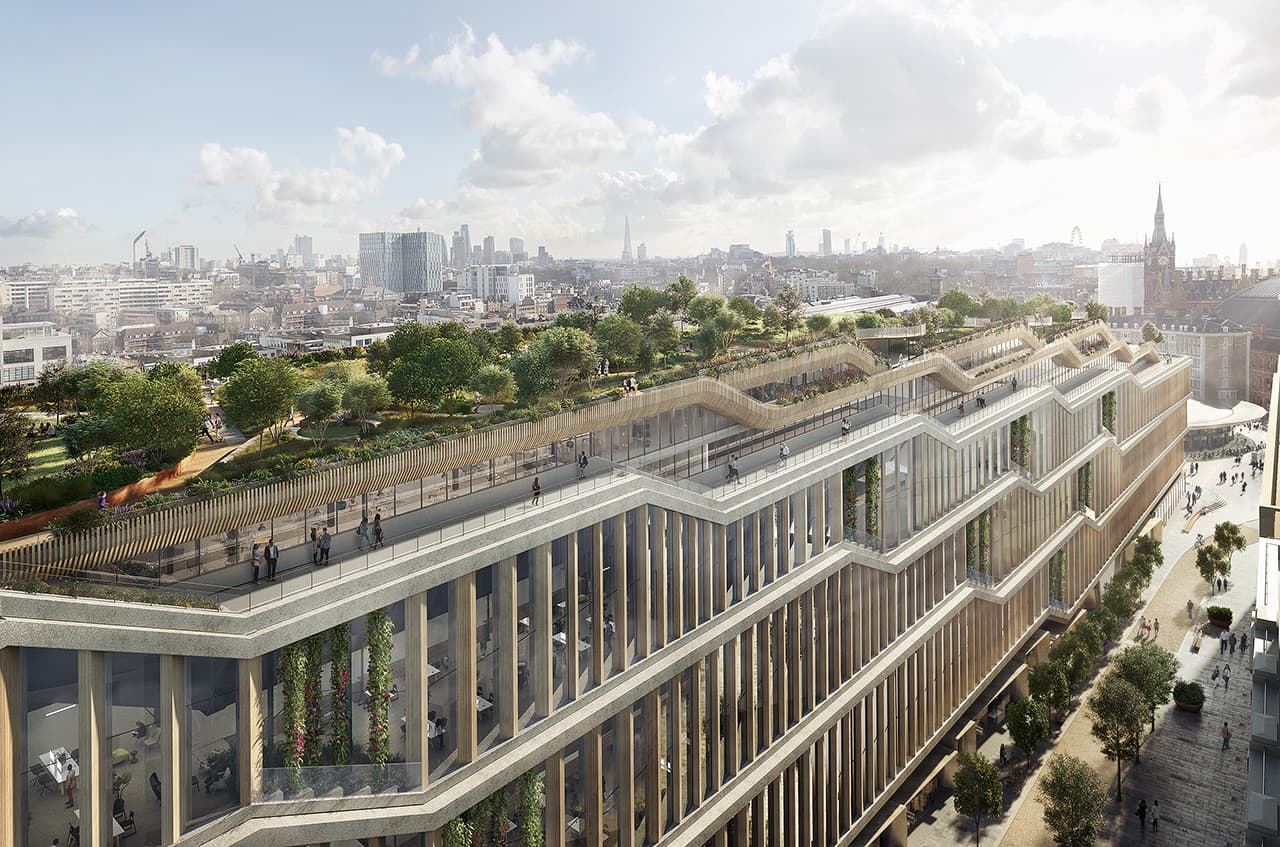
Above: "Groundscrapers" like Google's new London headquarters, are already appearing in our cities (image courtesy of Google). Below: A proposal for an "Earthscraper" in Mexico City (image courtesy of BNKR Arquitectur).
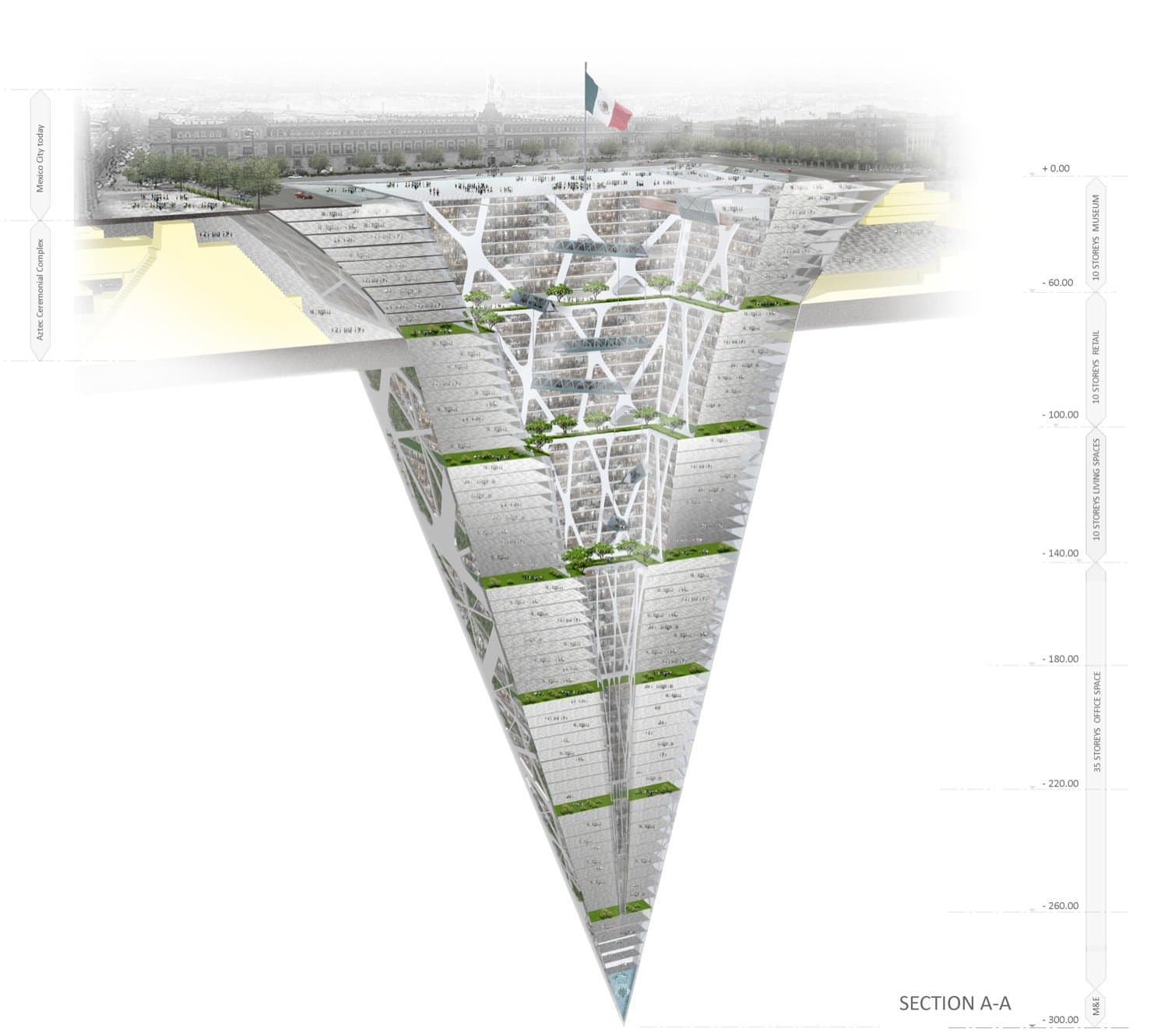
Oceans cover more than 70% of the earth’s surface but remain relatively unexplored and are seen by some as an obvious area to colonise as population expands.
To date this has taken the form of land reclamation projects such as those in Monaco and Hong Kong.
There have also been underwater hotels and research facilities and even an under-ocean data centre, which was trialled by Microsoft off the coast of California in 2015.
Now, theoretical concepts for entire underwater communities known as “oceanscrapers” have been floated.

Above: Oceanscrapers are structures that extend into the ocean depths (image courtesy of Vincent Callebaut).
An oceanscraper is an airtight, submerged structure that is built offshore and that can operate independently from land.
Free from the constraints of gravity, and relying on the natural buoyancy of their structure, oceanscrapers could in theory be built on a scale not possible onshore.
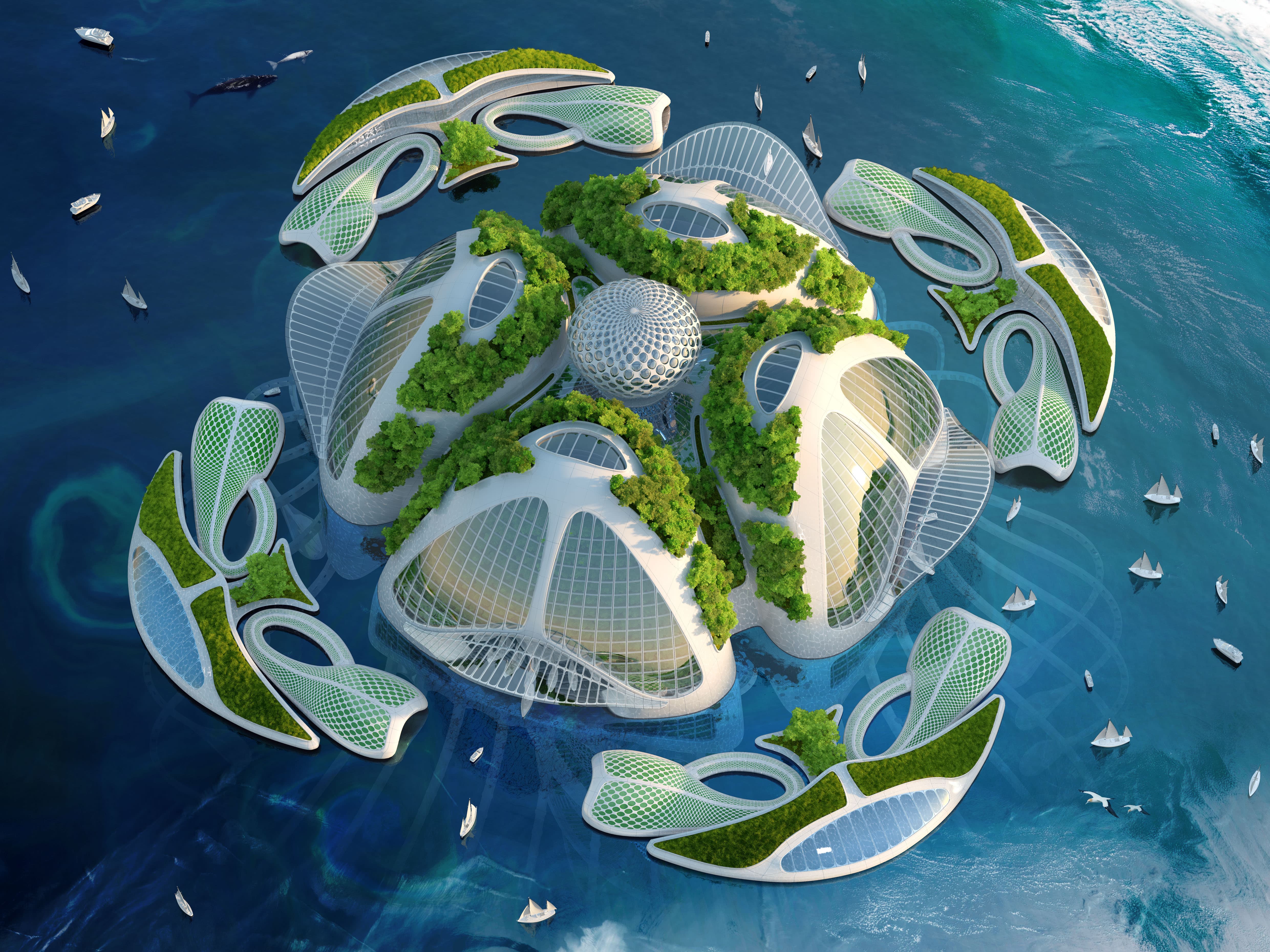
Above: Oceanscrapers could be built much larger than land based buildings due to their buoyancy (image courtesy of Vincent Callebaut).
Some proposals have these structures tethered to the seabed while others are floating and extend downwards from the surface - such as Sarly Adre bin Sarkum’s “Waterscraper”.
In 2015, Belgian architect Vincent Callebaut offered the most detailed concept for an oceanscraper to date using his vision to highlight the pressures that are currently being placed on our oceans.
“Aequorea” is a visionary city that would be built off the coast of Rio de Janeiro. Shaped like a jellyfish, the structure’s cylindrical form allows for natural currents to pass by undisturbed while offering stability and buoyancy in rough seas.
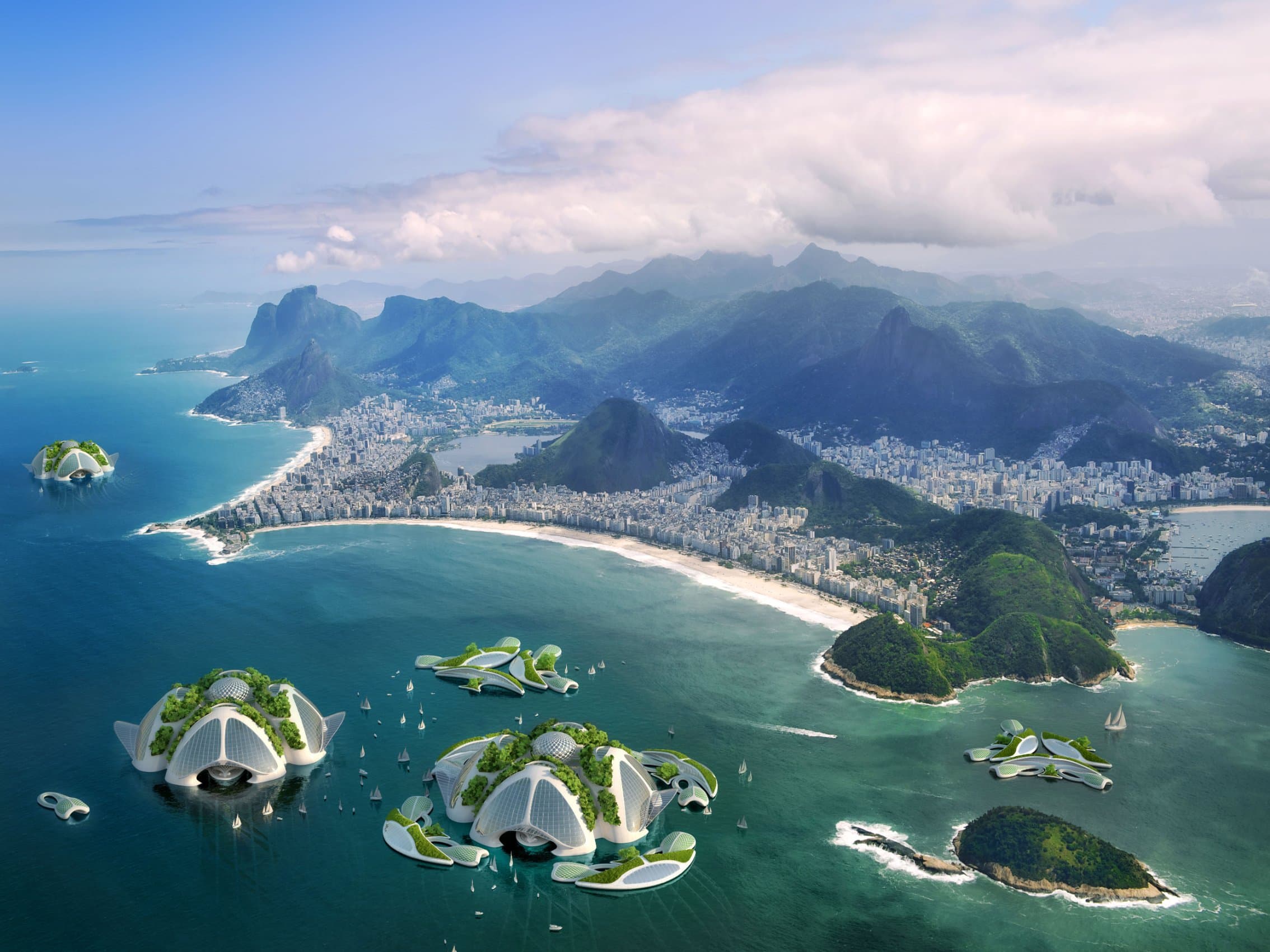
Above: Off the coast of Rio de Janiero, Aequorea was a concept developed in 2015 to highlight the plight of the world's oceans ( image courtesy of Vincent Callebaut).
Spanning 500 metres across the ocean surface and extending almost 1,000 meters down into the depths, these oceanic buildings would accommodate 20,000 people and feature apartments, hotels and sporting facilities alongside state of the art research laboratories.
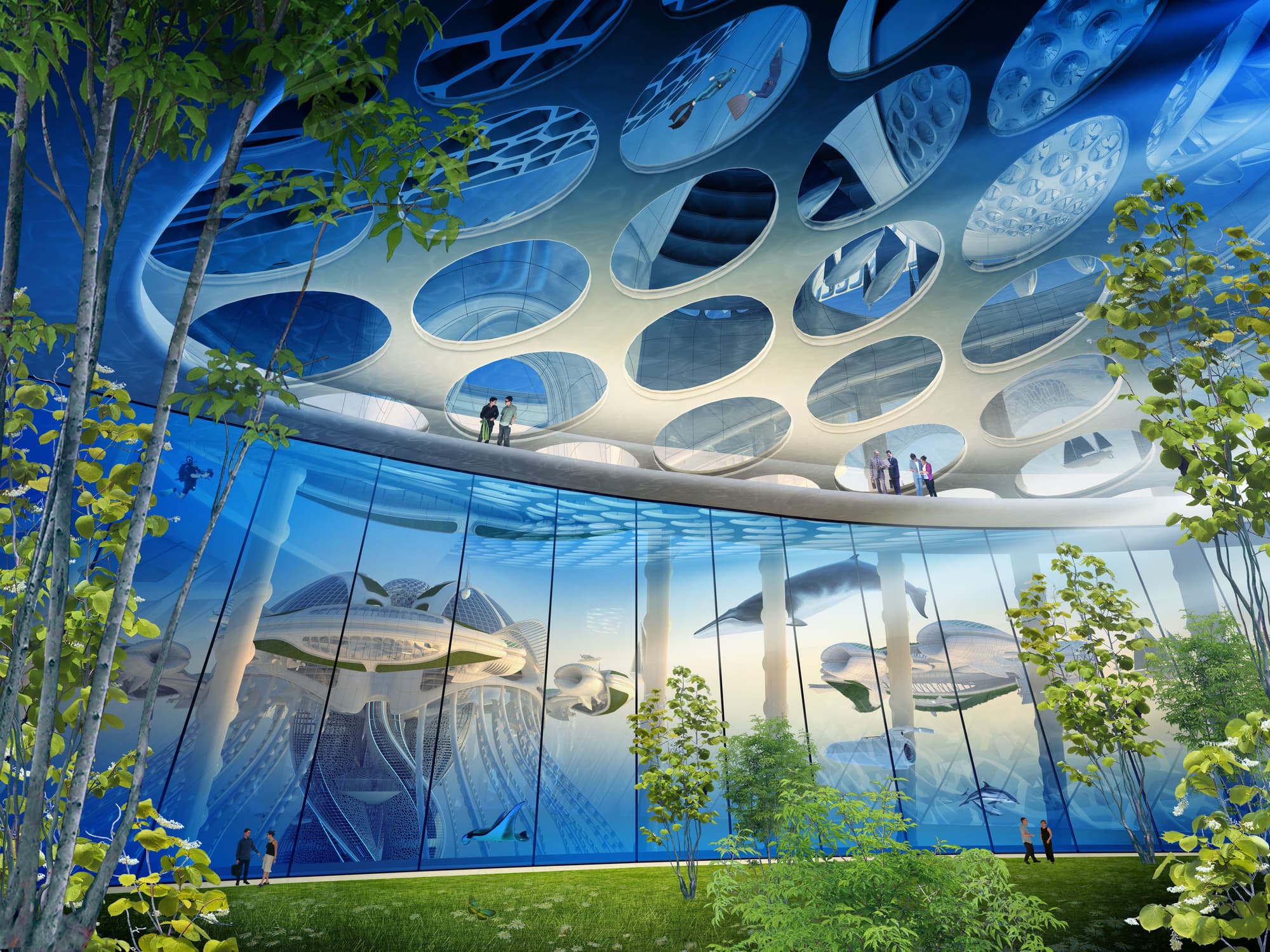
Above: "Aequorea" could accommodate 20,000 people (image courtesy of Vincent Callebaut).
Callebaut’s oceanscrapers would be 3D printed from “algoplast” a hybrid material that would be produced by cultivating marine algae and plastics from the “great garbage patches” floating in the world’s oceans.
This submerged world would be powered by renewables, using solar, wind and wave technology.
Continuing the theme of self-sufficiency, these particular oceanscrapers would use their surface structures for growing food, while farming algae and molluscs as a source of protein.
Fresh water would be harvested from the surrounding ocean via a desalination process.
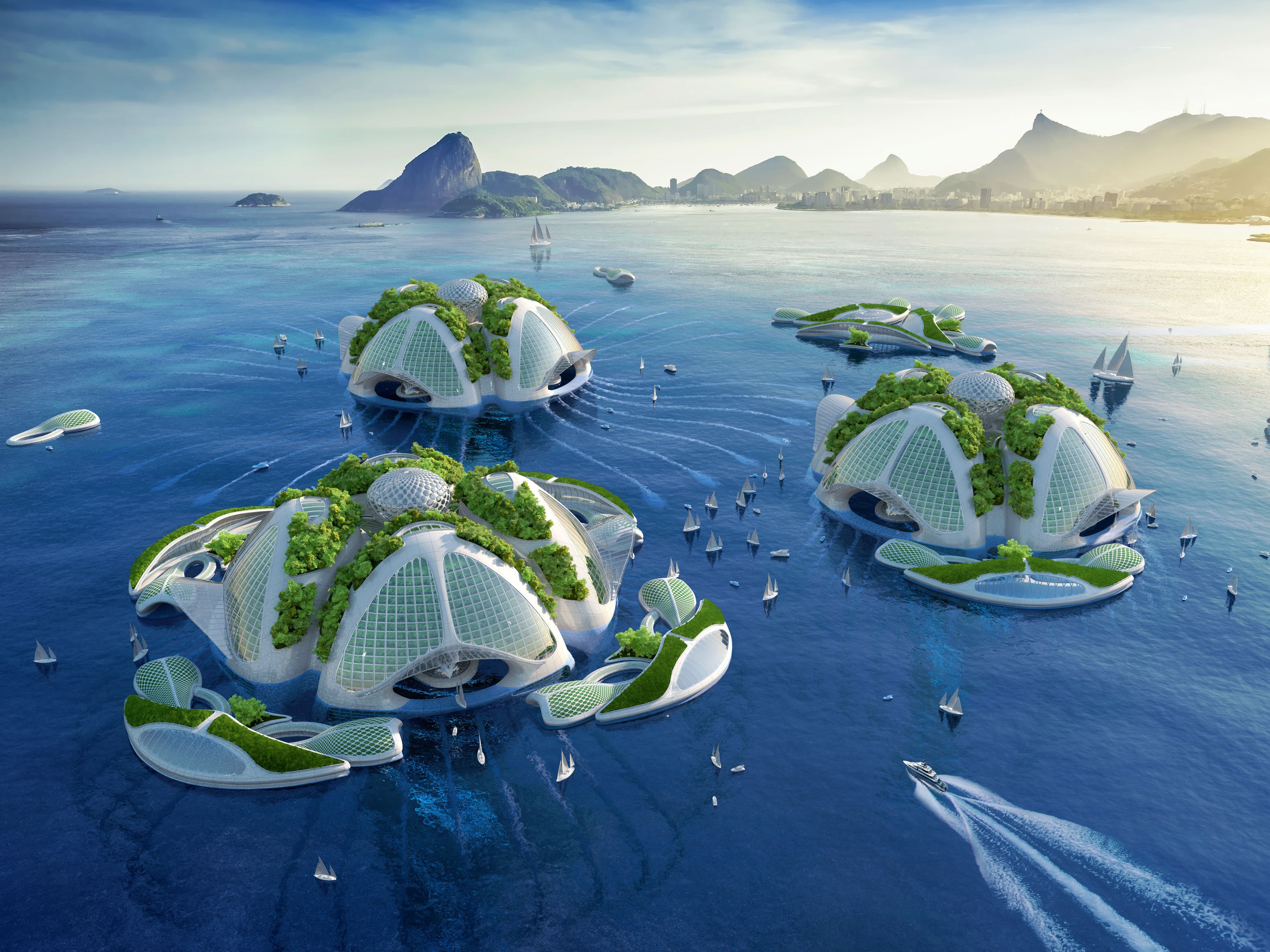
Above: Aequorea would use its surface structure to grow food, while algae and molluscs would be farmed for additional protein ( image courtesy of Vincent Callebaut).
Other concepts propose tethering structures to the sea bed and creating “earth factories” which can be used to harvest materials and energy from the ocean floor for use within the submerged community.
.jpg?Action=thumbnail&algorithm=fill_proportional&width=550)
Above: A proposed oceanscraper that would be tethered to the seafloor in order to mine energy and minerals for use within the structure (image courtesy of Tokyo University and the Japan Agency for Marine-Earth Science and Technology).
Although oceanscrapers remain some way from becoming a reality, with advanced and highly credible proposals already well-developed for human habitations on Mars, the concept of colonising such a large and untapped region of our own planet may not be so far-fetched.
Images courtesy of Google, BNKR Arquitectur, Valode and Pistre Architects, Microsoft Research, Tokyo University and The Japan Agency for Marine-Earth Science and Technology (JAMSTEC), Vincent Callebaut, Sarly Adre bin Sarkum (via Evolo).
We welcome you sharing our content to inspire others, but please be nice and play by our rules.








